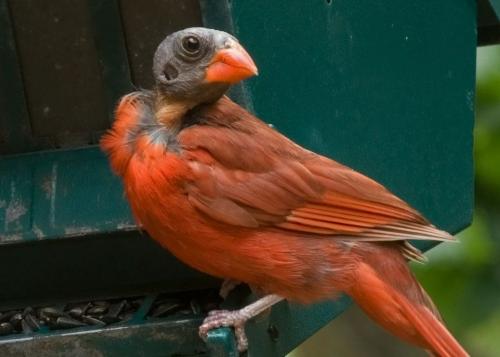Bad “Hair Day” for Cardinals
Tuesday, April 26th, 2016This is Passport to Texas
Imagine the sleek, bright red body of a male cardinal topped with a small, lumpy black walnut-shaped head. That’s what you’ll see mid to late summer when cardinals molt.
Feather molt is really important because feathers fray, they’re fragile.
You don’t want to look, but you can’t look away. Texas Parks and Wildlife Ornithologist Cliff Shackelford says the cardinal’s head feathers fall out over a short amount of time. While a bird with a naked noggin may be shocking, Cliff says “don’t fret.”
All we’re doing is witnessing that annual molt that replaces those old feathers—and he’s about to get new ones.
Their head feathers regrow within a few weeks. And, mercifully for the cardinals, they lose body and flight feathers at a more leisurely pace.
They just lose a couple at a time and they can still fly. So, most of our land birds and songbirds like the Cardinal don’t lose all their flight feathers at once because they would never make it. They wouldn’t be able to flee from predators and keep warm with the weather.
This summer, if you see a red bird that looks like it was put together with spare parts, it’s probably a cardinal suffering the humiliation of molting. Try not to point and laugh.
For Texas Parks and Wildlife…I’m Cecilia Nasti



 Passport to Texas is a
Passport to Texas is a  Passport to Texas is made available by:
Passport to Texas is made available by: